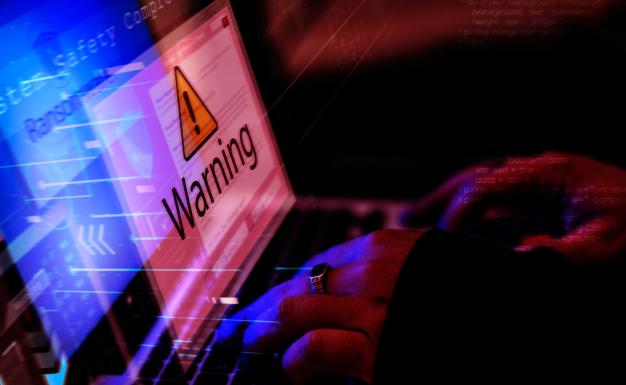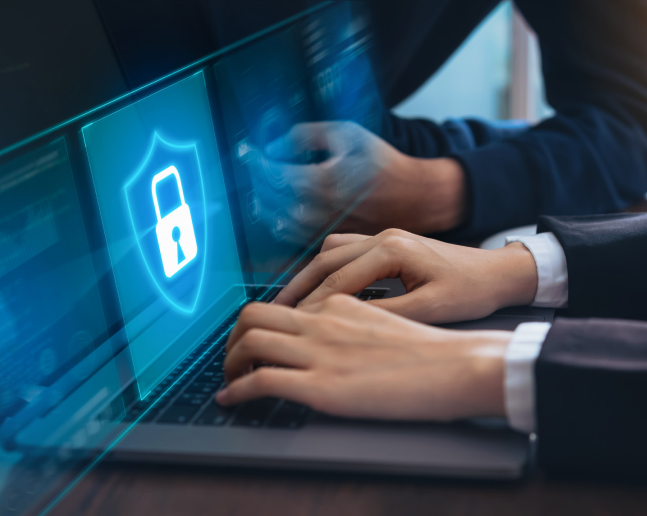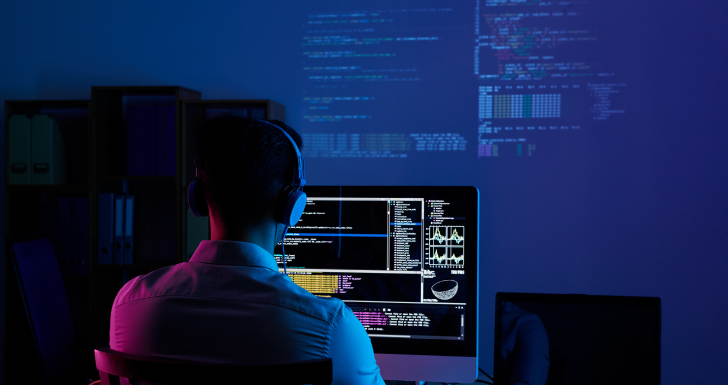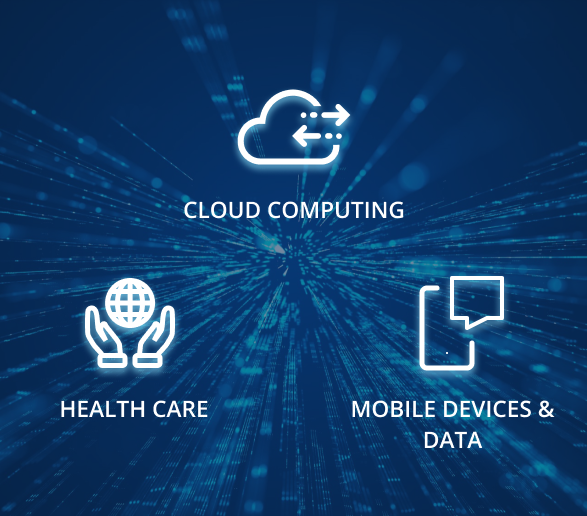A positive reputation is a valuable asset. You deserve to be in control of what the internet says about you or your brand. We specialize in building, monitoring, and protecting digital reputations. Schedule time with our team to audit your existing digital presence and find ways to elevate and enhance your online impression.
To say that everything is online now, even crime is no exaggeration. When a crime occurs either on the internet or via computer, also known as cybercrime, law enforcement is likely to get involved. And just as law enforcement agents work to accumulate evidence such as witness statements, fingerprints, and security footage in the aftermath of a real-world crime, digital investigators gather digital evidence in the aftermath of cybercrime.
“Digital Forensics is the branch of forensic science dedicated to the gathering, cataloging, and preservation of evidence related to cybercrime—instances in which a computer or digital device is used to actually commit a crime (e.g., buying or selling drugs online) or to facilitate otherwise separate offline criminal activity (e.g., messaging someone via smartphone for a meetup to buy drugs).”

Digital evidence can be found on any device or system that can store digital data or information, and digital forensics investigators have specific ways of gathering that evidence. Different techniques and tools are used depending on the kind of data being captured and the kind of devices (e.g., smartphones, computers, networks) holding the data. Trained specialists, such as those at Blue Ocean Global Technology, can do the work of gathering this information or training the employees of private companies to do so, depending on a company’s needs.
Digital Forensics
Digital forensics is most often used to gather evidence to be presented in a court of law, though this is not always the case. It can also be used by private entities to examine security failures and determine how they occurred. Although digital forensics is related to cybersecurity, it is largely separate.
Cyber Security
Cybersecurity is an ongoing effort to protect networks and information, while digital forensics gathers data and other information to be analyzed and presented as evidence.
Digital Forensics: An Incomplete History
Although crimes have been occurring on or facilitated by, computers almost since the introduction of the modern home computer, the idea that separate systems and procedures are needed to handle digital evidence arose only around the turn of the 21st century.
Digital forensics was originally no more than a kind of side skill among traditional law enforcement officers (the first ones to use it on the federal level were people who knew computers well), but it eventually emerged to become professionalized alongside the expansion and proliferation of the internet.
As the web grew, so did its use in committing such crimes as child pornography and the trade of drugs and weapons. Investigating this criminally, and proving it in court, required the ability to examine the data stored on digital devices and to draw conclusions about its usefulness as evidence. This demanded an increasingly specialized skill set on the part of law enforcement, which ultimately led to the development of the role of digital (or cyber) forensics investigator.

Why is Digital Forensics Important in an Online World?

Simply put, any company that regularly uses, stores, or facilitates its business using computers or via the internet (in other words, pretty much everybody) must have policies and procedures in place in the case of a cybercrime. This could involve a security breach, information theft, or other illegal activity. Those procedures should include either an in-house digital forensics team or an ongoing relationship with digital forensics experts, who can be called upon to quickly assess and address the situation.
Unfortunately, cybercrime is inevitable. We see it on the news with increasing regularity. What were once threats primarily for billion-dollar companies are now reaching ever smaller institutions. For example, school districts are subjected to ransomware attacks, with huge payouts to the attackers to free the affected networks. Hospitals and healthcare systems are repeatedly subject to thefts of massive amounts of private patient data.
The importance of good digital forensics policies to your company cannot be overstated. Appropriate steps must be taken to preserve evidence, and that evidence must be clearly presented to law enforcement or in a court of law because it can mean the difference between criminals seeing justice or getting away with what they’ve done.
A partnership with Blue Ocean Global Technology can position you to react effectively to security incidents. You need the proper skills and software to determine exactly where and how a security breach or network intrusion has occurred, discern whether private data was stolen, and gather evidence that could help law enforcement find the culprit. We work closely with our partners to provide tools for and thorough training in digital forensics that can both protect privacy and address any security crisis.
How It Works and What They Do: Some Basics of Digital Forensics?
Digital forensics as a field of study is administered by digital forensics investigators, who are usually in law enforcement or private enterprises and have some sort of professional certification or training specific to that field. On a practical level, digital forensics investigators will perform functions such as scanning a hard drive for erased data, cracking the password of a phone held in evidence, finding the source of a security breach, and investigating or reconstructing a suspect’s digital footprint.
Although this field is relatively new and the laws surrounding digital evidence are still developing, evidence gathered via digital forensics functions in much the same way as physical evidence or any other type. It must either be presented to law enforcement as proof of a crime or considered in criminal court as part of the argument of a defendant’s guilt or innocence (The same techniques can be applied to civil court, but the standards and burdens of evidence are notably different there).

For Example
A digital forensics investigator must follow certain steps to ensure that the evidence they gather is accurate and untampered with. The integrity of the data collected is often just as important as the data itself because, like physical evidence, the digital evidence must be without fault or modification. Otherwise, it might not carry legal weight in court, thereby risking a miscarriage of justice.
The process of digital forensics generally involves the following steps:

Clearly defining the necessary steps to be taken before an issue arises. This includes determining and securing the right digital tools and expertise.

Determining what the evidence is and where it is stored.

Separating the data, ensuring that it is secure, and removing the possibility of it being changed or tampered with. This is perhaps the highest priority.

Summarizing and drawing conclusions from all evidence gathered of the event in such a way that the information can be clearly communicated to any necessary legal authorities.

Creating clear and labeled records of everything related to the investigation. These records should then be collated and organized for ease of future use.

Examining the steps that led to the breach or illegal activity and drawing conclusions about what the “story” of the incident is.
Tools of The Trade

Selecting the right tool for the job is one of the primary skills of a digital forensics investigator, There are many useful tools available, some are proprietary while others are open source. Some digital tools are used to examine network activity to determine the timing and source of a breach. Others are dedicated to preserving critical data.
Tools have been designed to perform tasks such as scanning directories, examining browsing histories, recovering deleted files, and cloning disks. The Sleuth Kit, for example, is an open source set of tools designed to extract data from computer systems, even during an ongoing security incident. Others are designed to quickly take “images” of a device, allowing a picture to be created of the data stored in memory without disturbing any of it.
Great care must be taken when using digital forensics tools to examine different devices and systems. While security professionals might instinctively want to lock everything down and shutter all avenues of communication, a head-in-the-sand approach is a faulty one. The response to a security crisis must not only be rapid but also thorough and thoughtful. A certain level of delicacy is needed when dealing with data that might be, in a word, fragile. The level of a digital forensics investigator’s expertise and knowledge is massively important.
For Example
Mobile devices such as tablets and cell phones have special types of memory systems that can lose data when power cycled or shut down. If specific steps aren’t taken with such devices evidence could be lost.
Computer Forensics vs. Digital Forensics
Although the terms computer forensics and digital forensics are often used interchangeably, understanding the differences between them is important. Computer forensics, as the phrase implies, centers on investigation and forensics related to computers. Digital forensics does so as well but extends beyond that to include everything else related to the investigation of digital devices, networks, data storage, cloud computing, and so on—basically, anything capable of holding digital information, from hard drives to JPEG metadata. The distinction is subtle but crucial.
The Endless Risks of the Internet
The technology of the internet advances endlessly into the future. Everything is getting faster, more mobile, more easily accessible, and more widely distributed. This has led to increasing challenges in digital forensics as the field changes rapidly from year to year. Like cybersecurity in general, digital forensics is always playing catch-up, seeking new ways of uncovering the information cybercriminals are creating new ways of hiding.
The following are some recent areas of concern for the field of digital forensics:
Cloud Computing: The distributed nature of cloud computing creates a great deal of convenience for the average user and a logistical nightmare for digital forensics investigators. The information investigators seek could be located in server farms in far-flung locations, anywhere in the world. This leads to jurisdictional difficulties, complications related to the chain of custody, and a host of other problems.
Healthcare: Information management in healthcare is increasingly based on the use of mobile devices such as smartphones and tablets that provide convenient access to medical records at the point of contact between healthcare workers and patients. It also creates dozens and dozens of new vulnerabilities that cybercriminals exploit to access valuable patient records.
Mobile Devices and Data: Digital forensics is increasingly focused on mobile devices and the data they use and store. The ability to quickly access and analyze large volumes of data from these devices is vital. Digital forensics investigators in law enforcement often need to expediently access specific information from mobile devices to continue investigations. As a result, they must keep up with the latest in digital evidence gathering in a market with technology that is continuously being updated and accelerated.

Special mention must be given to the use of Artificial Intelligence (AI) in the field of digital forensics. Smartphones are continuously producing data, even when not actively in use. Computer networks are forever pinging back and forth with each other and with satellites, creating a history of data and communication. And the world has billions of smartphones, as well as computers, networks, tablets, and so on. What does this mean for investigators? Data overload.
Absolutely massive amounts of data are being created all day, every day. For a team of digital forensics investigators to sift through it all for evidence can be impossible. Many investigators are turning to AI to sort through these mountains of data. AI and smart algorithms can help identify and ignore false positives, data mine large-volume databases to uncover suspicious patterns in transaction histories, and use facial recognition technology to search huge numbers of photos for the face of a victim or suspect.
Because the amount of data generated by the internet is only accelerating, AI will almost certainly move from useful to absolutely necessary as an investigative tool. Therefore, digital forensics investigators must be familiar with how AI works and how to apply it to the gathering of evidence for analysis and presentation.
Schedule a free consultation with Blue Ocean Global Technology, and start getting the most from your content marketing efforts.
Analysis and Conclusions
Again, the importance of digital forensics must not be underestimated. It is a way for businesses, institutions, and law enforcement to examine a security breach or violation of the law, uncover exactly what happened, and take appropriate action. And action must be taken—the sooner the better. An increasing number of states have adopted laws requiring companies to publicly report security breaches and data theft. The consequence of ignoring data risk, of not preparing for what is likely to happen, could be much more severe than a public relations issue and include actual legal jeopardy. It is imperative that businesses prepare for this eventuality.
Of course, predicting what will happen in the future is impossible. But something all companies should expect is that any vulnerability in their information systems is at the risk of being compromised. Remember, the question is not if but when will it happen. Truly prepared companies will be able to respond to a crisis faster and more effectively. They will be ready to address data breaches and network intrusions with the support of well-trained, knowledgeable digital forensics investigators. They can discover, preserve, analyze, and present key data to create a clear picture of whatever failure occurred. As a result, the company can ensure that such an issue never happens again and that those who committed the crime see justice in the court of law.

Blue Ocean Global Technology prides itself on being a good faith partner to businesses and institutions that are looking to the future. Blue Ocean is ready to inform and train team members in the core necessities of digital forensics, develop cybercrime response strategies, and provide expertise for future planning. Digital forensics represents another front in the ongoing war for information and data. Now more than ever, a knowledgeable partner such as Blue Ocean Global Technology is essential to turning the tide in your favor.










